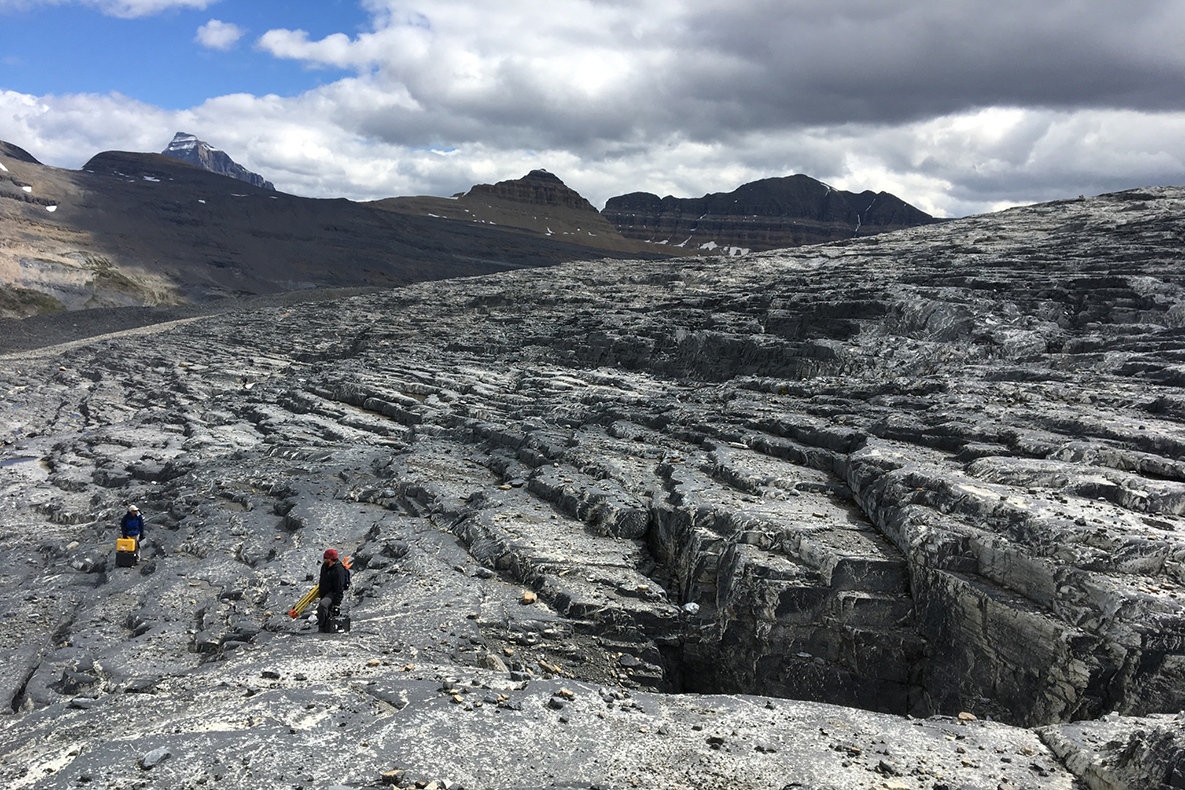Scientific advancements happen when society invests in highly creative, curious and talented researchers who push the boundaries of innovation and experimentation. Major breakthroughs often happen when scientists engage in fundamental or frontier research, which advances new ways of thinking about our world.
Frontier research takes time. Discoveries may not materialize during the next decade, or even during a scientist’s lifetime. But their commitment to basic research today builds a solid foundation for creating tomorrow’s discoveries.
These four accomplished researchers from the College of Liberal Arts and Sciences have spent their careers operating on the frontiers of science.
Neal Iverson: On top of the world
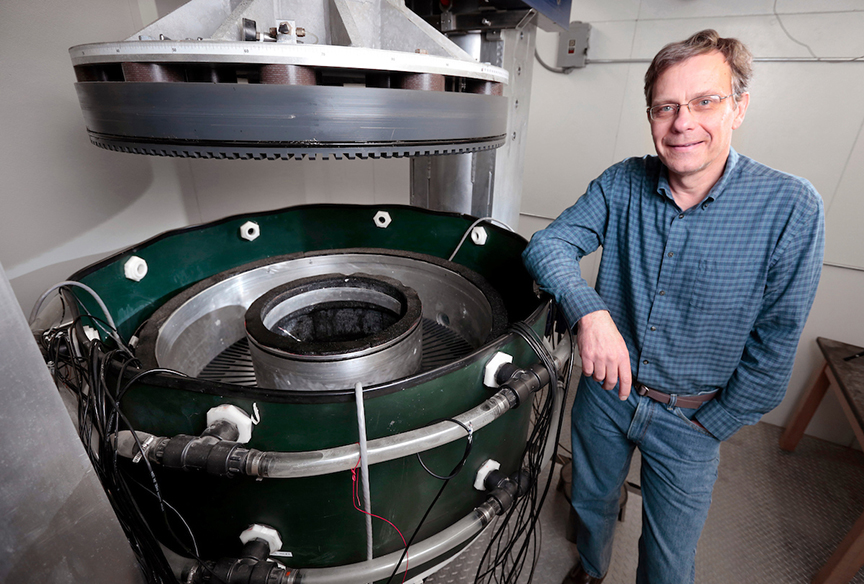
Neal Iverson’s research has taken him to the extremes — from snowy Arctic mountains to the frozen underbelly of a 700-foot-thick glacier in Norway. Iverson has spent four decades analyzing how glaciers move and studying their impacts on our planet’s landforms and landscapes.
“I’m interested in understanding how glaciers move over their rock and sediments bed,” said Iverson, professor in the Department of Geological and Atmospheric Sciences. “Glaciers sliding off continents leads to delivery of ice to the oceans, then the ice melts and raises sea level.”
Half of all sea-level rise is due to glaciers melting. Iverson’s research on glacial sliding contributes to a massive equation that scientists are trying to solve: How high will sea level rise and when will those increases happen?
“My research is one piece of a large puzzle that is taking decades to put together,” Iverson said.
“It’s a scientist’s job to fundamentally understand nature, and sometimes we have to be content with researching for the sake of curiosity and exploration.”
Iverson’s research, like glaciers, moves deliberately and slowly across many years, making big impacts that may not be immediately obvious.
“Science moves in a lot of different directions that are often very unpredictable, and the breakthroughs often happen years into a project,” Iverson said.
Iverson’s lab experiments are just as important as his outdoor field studies. In collaboration with Ames Laboratory engineers, Iverson designed and developed a ring-shear device, which allows him to apply large forces to chunks of sediment and ice.
“The device allows us to predict how fast a glacier will slip, depending on the conditions at its bed,” Iverson said.
Iverson also led a research team that developed a mathematical “slip law” for predicting glacial movement. The team’s research helps scientists estimate how fast glaciers will move.
“It’s a scientist’s job to fundamentally understand nature, and sometimes we have to be content with researching for the sake of curiosity and exploration,” Iverson said.
Gustavo MacIntosh: Planting Discoveries
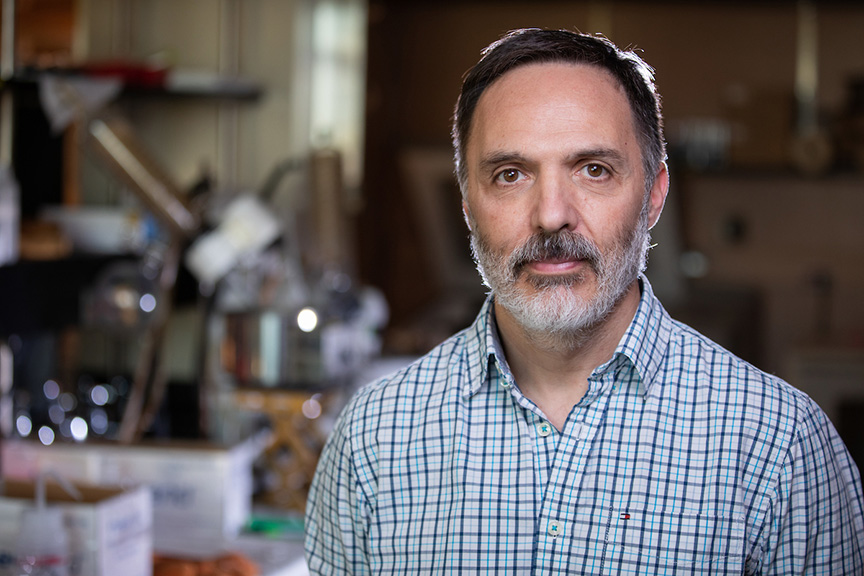
For nearly 30 years, Gustavo MacIntosh, LAS Dean’s Professor and professor in the Roy J. Carver Department of Biochemistry, Biophysics and Molecular Biology, has studied the molecular innerworkings of plant cells. Highly fundamental in nature, his research explores the mechanisms that control plant cells.
This research is important because it could someday lead to improved plants, higher crop yields and a deeper understanding of cellular plant functions.
“Tomorrow’s big challenges in climate change, overpopulation and food security will require major responses from the plant sciences to address these problems,” MacIntosh said. “Our future depends on it.”
MacIntosh’s work is focused on two long-term projects — probing the interactions between soybeans and aphids; and studying how cells recycle their structures, such as ribosomes, while analyzing how these processes influence plant development and their barriers to control plant diseases.
“Although most of my work is studying plants, we can shed light on human diseases, based on the biological processes we see happening in plants,” MacIntosh said. “The study of plants could someday lead to cures and better treatments for a wide range of conditions.”
“Solving major global problems through research is very satisfying, but it can take years of studies to reap the rewards.”
MacIntosh is also advancing agriculture and large-scale farming practices that are better for the environment.
“Creating soybean breeds that are more resistant to invasive pests, such as aphids, helps to reduce the amount of insecticide used in farm fields,” MacIntosh said. “This is healthier for people, animals and insects that play important roles in food-chain ecosystems.”
Reducing agricultural insecticides means fewer chemicals floating through the air and landing in our waterways, and less harm to critical pollinators, such as bees and butterflies. According to the Center for Biological Diversity, more than half of North America’s 4,000 native bee species are in decline, due to insecticides.
MacIntosh, the president of the American Society for Plant Biologists, hopes that his work will improve life for generations to come. He’s currently applying his years of plant research to projects that address future food-security issues related to our rapidly changing climate.
“Solving major global problems through research is very satisfying, but it can take years of studies to reap the rewards,” MacIntosh said. “The support from Iowa State on these high-risk, high-reward projects that are a bit more exploratory, has been very important to the progress in my lab.”
Robert McQueeney: Fundamental matters
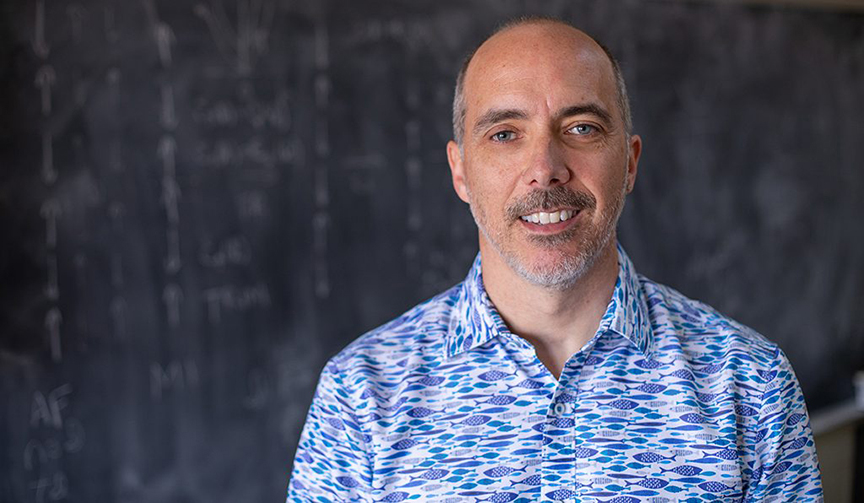
For 25 years, Robert McQueeney’s research has focused on the subatomic universe of neutrons.
McQueeney, John and Mary Weaver Professor of Physics and scientist at Ames Laboratory, studies neutron scattering from magnetic materials. This specialized technique of condensed matter physics involves the study of energy exchanges — the losses and gains — that occur when neutrons are scattered from crystals of novel metallic ferromagnets and magnetic insulators.
“Discovering new phenomena using neutron scattering is important because it could lead to the development of new materials used in information technology, medicine and energy,” McQueeney said. “You may not know for a long time where these experiments may lead, but that’s the beauty of basic research.”
McQueeney’s work requires powerful particle accelerators and nuclear reactors to scatter the neutrons. Only three accelerators in the world have these capabilities, including Oak Ridge National Laboratory in Tennessee, where McQueeney conducts his experiments.
Data from the experiments offer the research community an enhanced understanding of the fundamental interactions that drive important phenomena like superconductivity. McQueeney finds it thrilling to push materials in different directions and share those discoveries with the world.
“Basic research involves many scientists sharing information and working together over a long period of time.”
“An inventor or scientist could use my findings to develop new materials, next-generation devices or advances in quantum computing,” he said.
Inventions such as semiconductors and lithium-ion batteries would not exist without investments in fundamental physics research.
McQueeney is the director and co-founder of the Center for the Advancement of Topological Semimetals (CATS) at Ames Lab. The center brings top scientific talent to the U.S. and abroad to develop magnetic topological materials.
McQueeney routinely collaborates with Paul Canfield, Distinguished Professor in the College of Liberal Arts and Sciences, the Robert Allen Wright Professor of Physics and Astronomy and scientist at Ames Laboratory. Canfield grows and also studies the crystals that McQueeney uses in his neutron scattering experiments.
“A single researcher is not going to crack the world’s highly complex problems alone,” McQueeney said. “Basic research involves many scientists sharing information and working together over a long period of time.”
Theresa Windus: By the numbers
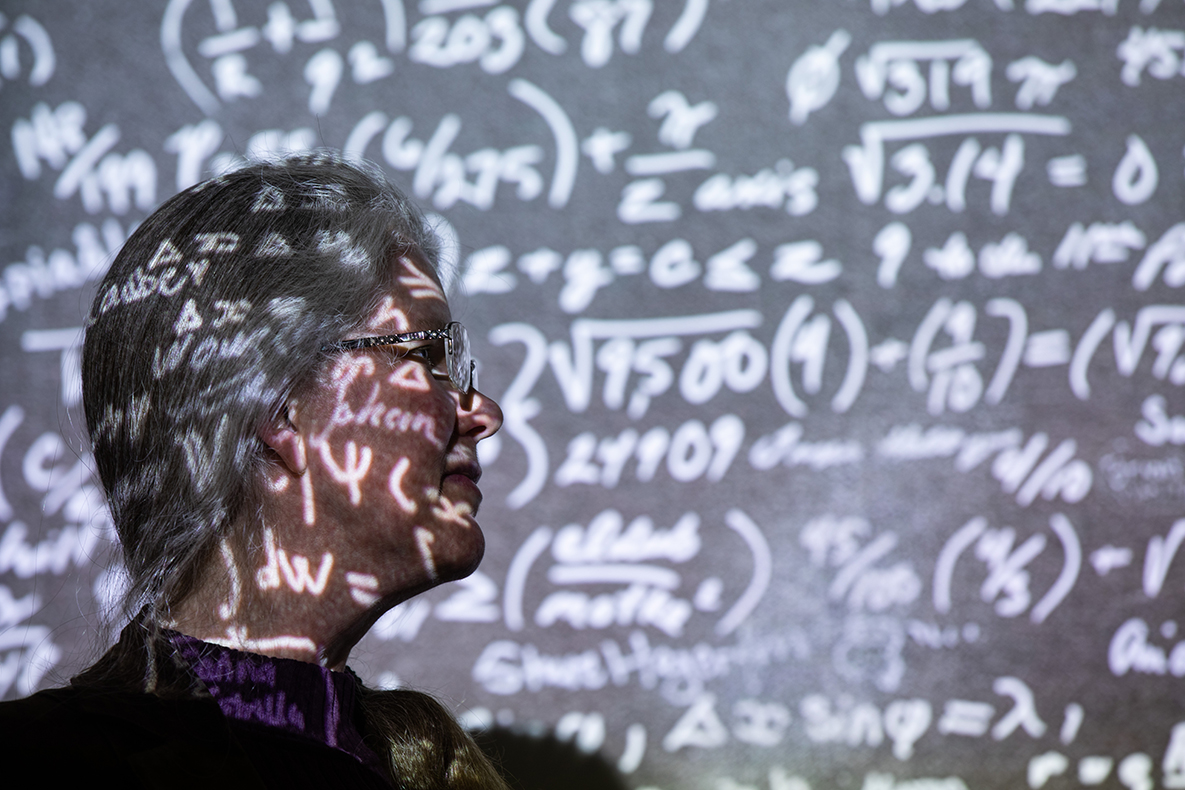
Chemists, physicists and other scientists require a solid foundation of mathematics, modeling and high-performance computing to conduct their large-scale experiments. But these advanced computational methods are laborious and can diminish the time that scientists spend in their labs conducting core research and experimentation.
Developing molecules for metal separations, formulating catalysts and producing artificial intelligence software involves a unique fusion of algorithms, computations and computer code that underpins this rigorous research.
This is where computational chemist Theresa Windus steps in.
“I’m very much interested in making processes and simulations faster,” Windus said. “If I can create a 10% decrease in time-to-solution, I’m actually helping researchers do 10% more science on the computer. I think about that a lot.”
Windus, Distinguished Professor of Chemistry, LAS Dean’s Professor and Ames Laboratory scientist, has spent 30 years developing custom computational tools that accelerate research processes.
“Basic research is like the foundation of a house, which may not seem that exciting or cool, but without it, your house crumbles.”
Computation chemistry is like a busy intersection where mathematics, chemistry and computer science converge. Sometimes Windus creates custom solutions for one scientist. Other times, she develops computational tools for a broader range of researchers.
One such project is the open source computational chemistry software NWChemEx, an ambitious, national effort to redesign NWChem for large-scale computing. Windus is director of this project to advance large-scale computing into the future.
“NWChemEx uses modern theories, algorithms and computer languages to enable faster, larger and more accurate computations for important scientific challenges,” Windus said.
As an Ames Lab scientist, Windus also collaborates with researchers at the Critical Materials Institute, a U.S. Department of Energy Innovation Hub at Ames Lab. She improves rare-earth metal separations and automates chemical processes. The goal is to produce less toxic waste.
“Basic research is like the foundation of a house, which may not seem that exciting or cool, but without it, your house crumbles,” Windus said. “So if we want to make better chemical processes, we must first gain a deeper understanding of fundamental chemical principals.”
